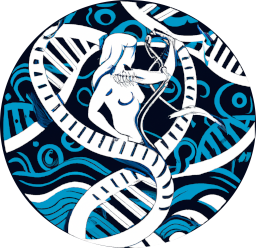2. Developer guide¶
2.1. Introduction¶
Developers are lucky: they can do more than users. If you type:
damona --help
you will have the users' commands. However, they are more commands available. They are not shown because they are intended for developers only.
The first useful command for developers is the build command:
damona build --help
The second is the zenodo-upload command:
damona zenodo-upload --help
2.2. All images will be posted on Zenodo if Singularity recipe is in Damona¶
The goal is to have a unique and official DOI for each tool.
git clone git@github.com/your_fork/damona
cd damona
Let us consider an example called SOFTWARE. You must be in the directory of the SOFTWARE package:
cd recipes/SOFTWARE
Warning
the following required registered token on Zenodo and will upload images on Zenodo as well ! Consider removing the --mode zenodo to try the sandbox version
2.2.1. Case 1: the tool does not exist.¶
Create a new Singularity image. Time to upload the resulting (functional !) image:
damona zenodo-upload SOFTWARE_1.0.0.img --mode zenodo
This command uploads the image on Zenodo with all correct metadata already pre-filled for you. It also creates a registry.yaml file with the metadata ready to commit and push. edit the registry file to add a binaries section if neeeded.
2.2.2. Case 2: the recipe exists already¶
Create a new Singularity image. Time to upload the resulting (functional !) image:
damona zenodo-upload SOFTWARE_2.0.0.img --mode zenodo
It updates the existing registry.yaml ready to commit and push
2.3. tree structure¶
Recipes are in the ./recipes directory with one sub-directory per tool or environment. Inside a sub directory (e.g, R, conda) you may have several recipes for different versions.
For example, for Damona there is a directory called Damona. Inside that directory, if there is only one recipes, name it:
Singularity.damona
If you wish to have several recipes for different version, name it:
Singularity.damona_x.y.z
2.4. Naming convention¶
A valid singularity image must have the following name:
Singularity.NAME_x.y.z
Singularity.NAME_SUFFIX_x.y.z
Underscore can be part of the name.
Images names for users will appear as:
NAME:x.y.z
NAME_SUFFIX:x.y.z
Note that NAME could be in small or big caps but the final image with be all lower caps (singularity-hub feature). Consequently, when downloading an image, it should be named as pkgname:x.y.z
2.5. building¶
To test the recipe, type:
damona build pkgname:x.y.z
This is just an alias to singularity build command:
sudo singularity build pkgname.img Singularity.pkgname_x.y.z
2.6. Singularity recipes¶
Here are some instructions to help writting recipes.
Try to set version instead of latest:
BootStrap: docker
From: mambaorg/micromamba:1.4.4
is better than
BootStrap: docker
From: mambaorg/micromamba:latest
By experience here are some conventions that could be useful. These commands are useful to avoid warnings when running the container
%environment
LANG=C.UTF-8
LC_ALL=C.UTF-8
export LANG LC_ALL
No need for labels but if you want, you may add a labels section:
%labels
whatever
No need for help section.
A useful set of commands is also to add test within the container but this is only tested when building the recipes:
- %test
command --help
2.7. registry¶
For each singularity, a registry is required. It contains a yaml file that looks like
fastqc:
0.11.9:
download: URL1
md5sum:
binaries: fastqc
0.11.8:
download: URL
md5sum:
binaries: fastqc
fastqc:
binaries: fastqc
0.11.9:
download: URL1
md5sum:
0.11.8:
download: URL
md5sum:
The download link can be of three types:
a valid URL
an image on the damona website. For instance with ucsc recipes, we stored it on the damona URL, which is:
download: damona::ucsc_0.1.0.img
it will look for the damona URL. This is an alias to https://biomics.pasteur.fr/salsa/damona/ucsc_0.1.0.img
an image stored on syslab.io:
library://cokelaer/damona/conda:4.7.12
2.8. Where are stored the containers ?¶
Since Dev 2021, we store containers with a DOI on Zenodo website. Originally, we stored some container here: https://cloud.sylabs.io/library/cokelaer/damona but we extended Damona so that it can fetch containers from other places. If you have your own containers, it is quite simple to create a registry and place it anywhere on the web and inform damona that you want to use that registry.
We have an example on https://biomics.pasteur.fr/salsa/damona
2.9. Build an image locally¶
Sometimes, the version you are looking for is not available. It is quite easy to rebuild the recipes yourself and store it locally.:
damona build Singularity.recipes
Again, this is just a wrapper around singularity build command. The advantage here is that we can use this command to buld a damona recipes:
damona build fastqc:0.11.9
You can then save the image elsewhere if you want:
damona build fastqc:0.11.9 --output-name ~/temp.img
This is nothing more than an alias to singularity itself:
singularity build recipes Singularity.recipes
More interesting is the ability to build a local version of a recipes to be found in damona:
damona build salmon:1.3.0
this will find the recipes automatically and save the final container in salmon_1.3.0.img.
2.10. Upload image on sylabs (DEPRECATED)¶
singularity build salmon.img Singularity.salmon_1.3.0
singularity sign salmon.img
singularity push salmon.img library://cokelaer/damona/salmon:1.3.0
2.11. What about reusing a docker image¶
You can. See for example the hisat2 image here: https://github.com/cokelaer/damona/tree/master/damona/recipes/hisat2
It looks like:
hisat2:
releases:
2.1.0:
download: docker://biocontainers/hisat2:v2.1.0-2-deb_cv1
binaries: hisat2 hisat2-build
md5sum: e680e5ab181e73a8b367693a7bd71098
Here, there is no zenodo link though because it is already on docker.
